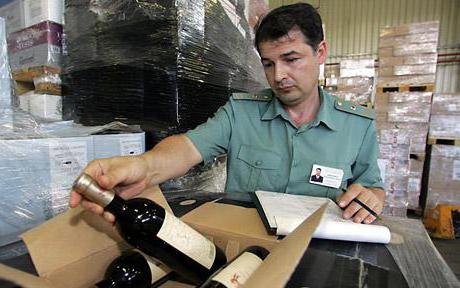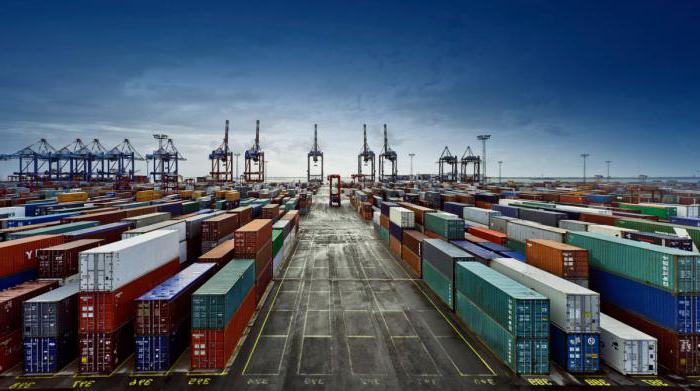Most people probably are not aware of what the FEA is and what it is for. The abbreviation itself stands for "commodity nomenclature foreign economic activity. ”
It follows that this object is used in the customs law and in the foreign trade of the country and has its own rules for interpreting HS.

What is TN FEA?
HS is a list of goods with a specific code assigned for each type of product.
The CN FEA itself is externally a table showing animals, products, plants, substances, works of art, cars, and many goods transported across the borders of the Russian Federation in sections. Be it the rules of interpretation of the HS of the Customs Union or the EAEU, each section of the goods is assigned the HS code. There are twenty-one sections in total, respectively, the code itself is numbered in Roman numerals until XXI. If you click on a section in the table, a footnote appears with a complete list of products that are included in this section.
For example, if you select the footnote “Works of art ...”, a mini-table will appear listing the items that fall under this section. Here are paintings, and prints, collectibles and other goods. Each product has its own four-digit code. In this case, the HS has begun with 97, then the numbering of the goods itself: 01; 02 and so on. Then the value 9701 is selected - these are pictures, drawings.
In this case, two names and six-digit HS codes are issued. In the first paragraph there were paintings, drawings and pastels, in the second - collages and similar decorative images.

Table of HS
The table itself is freely available. In any case, it will be useful not only to customs officers, but also to tourists. Indispensable in international business, primarily for participants in foreign economic activity. The interpretation rules of the HS allow you to operate on the above table.
The purpose of this nomenclature is to collect information, as well as regulate and control foreign economic activity. Also, FEA allows you to control the import and export of goods, deal with licensing and issuing quotas. In addition, issue declarations for goods, regulate tariffs, in general outline monitor the entire country's goods turnover, and thereby exercise control at the customs borders of the Russian Federation, based on the rules of interpretation of HS.
The product nomenclature has a number of characteristics, such as:
- division into groups according to specific data;
- lack of theoretically useless signs.
Groups in the table do not overlap in terms of content. You can pick up a code for any product and personal property.
The goods are demarcated in the table of foreign trade activities objectively, since they are divided according to the functional principle, composition of the substance, purpose of the item, degree of processing and belonging to a specific industry. All this is necessary for the transportation and storage of goods.
Those goods that are at the same level of commodity position, as a rule, are economically equal.

Code Sections
When moving goods across the border, a code is assigned to it. The responsibility to identify and assign the code lies with the declarant. If the code is assigned correctly, determine customs authorities control. The calculation and collection of payments depends on how correctly it is determined. It is also necessary to apply the rules of interpretation of HS.
When assigning a code, spaces and hyphens are not allowed. It allows you to quickly process data and provide information to competent persons.The code is specially selected for automation and faster and more accurate work of customs authorities.
More details about the numbers
The beginning of the code, the first two digits is a group of goods; four digits - item position; six digits - subposition of the goods; ten digits - subheading, or full product code.
The first six digits of the code determine its compliance with the state system of nomenclature. The seventh and eighth digits correspond to the nomenclature of the European Union; ninth figure - CIS countries. The tenth figure is intended for indication at the national level.
Thanks to this nomenclature and based on the basic rules of interpretation of the HS FEA CU (CU - Customs Union), duties, excises, VAT are levied. Also, the technical nomenclature determines the rate at the customs duty, allows you to keep statistics foreign trade, determines the type of product. And, of course, allows you to identify offenses with the subsequent adoption of measures.

Distribution of the product code across the EAEU
For persons participating in the Eurasian circulation of goods, the use of the FEA is the main prerogative, since customs duty, prohibitions, restrictions and non-tariff measures directly depend on this.
In order to distribute goods by class, using the basic rules of interpretation of a foreign economic activity with the subsequent assignment of a code, an examination and the presence of certain technical knowledge of employees are required. For more objective statistics, a classification of goods has been introduced in customs. The Euro-Asian Economic Union has provided certain measures to control goods by adopting the Customs Code of the Customs Union. Due to the fact that there are basic rules for interpreting the EAEU FEACN, the member countries of this union can themselves determine the code of goods that passes through the border. In the event of an error in assigning a code to a product, customs has the right to make this quote at the request of a person interested in this operation. Also, customs authorities, guided by law, have the right to give explanations; make decisions and ensure the publication of information on specific types of goods.
What is the basis?
As already mentioned, product classification occurs according to certain signs and rules. In total there are 6 rules for the interpretation of HS FEA.
The product nomenclature is based on laws such as the International Convention on the Harmonized System with a Description and Coding of Goods and the Combined Nomenclature of the EU, as well as international trade experience. The harmonized system compares and relies on international and national foreign trade data.
The countries that are members of the Eurasian Commission can independently formulate and develop the nomenclature and customs tariffs based on the Harmonized System, working more deeply on product positions and basing on the basic rules of interpretation of the EAEU FEA. To date, more than one hundred and seventy countries are engaged in these developments.
Taking into account the rules of interpretation of the EAEU FEACN, it should be said that the classes of goods are divided first by a common feature, and then, in more detail, by specific features.
Concerning international convention then it can be noted that in this case the goal of creating and applying the system in general was stated. Legal issues and the procedure for their execution between the parties to the agreement were also stipulated.

As with any contract, the parties to the agreement have their rights and obligations. Such obligations include the use of a code, as well as commodity items, without changes and additions to someone else's benefit. It is necessary to observe the basic rules of application without changing them, including notes, volume of sections, observe the encoding of the product itself. It is also necessary to provide data on statistics of imports and exports at customs borders, so that the main characteristic of the rules for interpreting foreign trade activities is preserved.
Also, participants are entitled to add subsections in excess of the code in the six-digit designation, which more fully display information about the product. Plus, they can create separate rates.
In order to avoid errors when importing and exporting goods, we came up with the following algorithm of actions. This includes complying with the six main rules of trucking. These rules include elements such as the introduction of goods into the relevant heading and the following subparagraphs.
In the work of participants in foreign economic activity and, accordingly, customs authorities, the table of foreign trade activities and the basic rules of interpretation of foreign trade activities of the Customs Union are simply necessary and irreplaceable tools. Since in the event of a coding error, incorrect accruals will be made, penalties and the entire customs system will go into erroneous calculation, which is detrimental to the state and international business as a whole.
Each character of the HS code can vary, from zero to nine, depending on the position of the goods. The CN FEA also contains information such as measurement in units, be it a kilogram or an additional gram, centner, ton, and so on.
All items in the HS are legally binding and protected by law. The notes themselves, which are part of the basic rules for the interpretation of CN FEA, have a number of their own functions.
First, they exclude certain types of goods from the classification of the group itself. Secondly, they include certain types of goods in the group of classifications. Thirdly, in order to avoid overloading the position of the text of the HS, they include a number of terms and, accordingly, give explanations to them.
It is worth noting that the notes apply only to the group of products in which they are located. They do not apply to other groups. The only exceptions are those notes that directly indicate amendments to the HS themselves, as a rule, this is described in the nomenclature itself.

Rules for the interpretation of CN FEA, explanations and clarifications
There are six rules in total, but they include additional, more specific sections. Each of the sections serves for a clearer and more concise understanding of the nomenclature and the determination of cases when the rules for interpreting CN FEA are applied. Briefly it is worth saying that the main value of these rules is that they determine the order of the classification code itself, being the very algorithm of action.
1. For more convenient use of the nomenclature, there are names of special sections, groups, subgroups. As for the legal basis, in this case, the positions of the goods are applied together with the notes, unless otherwise provided by the following provisions.
2.1. Each link in a commodity position is automatically considered as a link to this product, even if it is located separately from the commodity position. If the product is located separately from its position, it still has the properties of this position. Incomplete goods still have the properties of a completed one.
2.2. If the reference in the nomenclature indicates a specific substance, it is still considered to be a compound of the material. In turn, a reference to a material or substance should be considered as a reference to a product consisting of this substance.
3. The third rule informs us that if a product belongs to several commodity items, then it will be classified according to the following points:
3.1. First of all, preference is given to that position, which describes the active substance in more detail in comparison with the general description of other positions. The remaining positions will be considered on an equal footing if the object itself is multicomponent, and other positions will describe specific substances of this product.
3.2.If the product does not fall under the criteria of the first paragraph, the rule applies that a product consisting of many components (and located in a set for retail sales) should be classified by its main property.
3.3. If the first and second points do not fit, then the goods are classified in the last order by digital code increase.
4. If all of the above rules are not applicable, the goods should be attributed to similar goods in the heading.
5. Rule number five likewise consists of two points:
5.1. The packaging or container in which the thing provided with this item is stored, intended to be stored for a long time, is classified together. It can be all kinds of covers, for example, from laptops or cameras; cases for weapons and musical instruments. This rule does not apply if the container and the item are one, and the first gives the main property to the second.
5.2. It is an amendment to the first paragraph. The packaging or container in which the thing provided with this item is stored, which has the function of preserving it for a long time, is classified together.
This clause is not obligatory, as it can be reused several times, and it is not necessary to classify along with the goods if they are of the same type.
6. For the legal support of this agreement, all goods in subheadings (this means six digits of the position of the goods) should be named according to each other and should be in the same position.
Also, notes with sections and groups may apply to this rule.
Rules Notes
The principles by which goods are classified in headings are listed in the five rules above. As for the sixth rule, it defines subheadings and subheadings.
Should be considered:
- Before addressing all subsequent rules, rule 1 must be applied.
- In the case where the first rule did not help with the definition of the code, it is worthwhile to be guided by the fact that for goods having heterogeneous properties, the following subparagraphs (2.2; 3.1; 3.2; 3.3) are applied sequentially.
- Rules 2 and 6 can only be applied after the first rule.
- Rule 4 can only be used after it has been verified that the first rule in clause 3.3 did not correspond to the acceptance code.
- Rule 6 may be applied in conjunction with subparagraphs (5.1; 5.2; 2.2), as well as separately in any order. For example, an unassembled scooter, packed in a cardboard box, falls under paragraphs 2.2 and 5.2.
To avoid errors during declaration, these rules should be applied. That is, a specific product is included in the heading, then a subheading is introduced according to the scheme, then a subheading. All these items are indispensable for this operation, since the customs authorities are the declaration of goods and means of transport. Compliance with the EAEU TN FEA is paramount and necessary.
The conditions under which the correct HS code is determined are the exact characteristics and name of the product itself, as well as the construction of the classifier itself with a value.
The basic rules of interpretation of HS FEA: examples and clarifications
For a better understanding of the item, examples should be given. There are many of them under certain rules and paragraphs of the HS. Below are the rules for interpreting CN FEA with examples.
You should start with the second rule under the first paragraph:
2.1. Each link in a commodity position is automatically considered as a link to this product, even if it is located separately from the commodity position. If the product is located separately from its position, it still has its properties. Being incomplete, this product has the principles of completion.
This interpretation also uses the rules of interpretation of the HS FEA of the vehicle. Examples include the passage of goods across the border.
For example, a figurine made of ceramics imported into the Russian Federation for coloring a product will have the same functions and properties as a painted one. It has not lost its properties, respectively, this paragraph applies to it.
Another example of this rule: at customs passes the cargo in the form of a disassembled simulator, and with it all the parts and spare parts for its assembly. In the product classification it will be under the code 8712, as a fully assembled product.
Rule 3.2 states: a product consisting of many components, which is in a set for retail sales, must be classified by its main property. An example is a mixture of cereals in equal amounts. This product fits the rule perfectly, as this product consists of several cereals.

Another example related to the multi-component nature of a product is a video player with a built-in flashlight. In this case, there are two components of this device with different functions. Moreover, each of these functions can be represented in a separate position.
Rule 3.3: if the first and second paragraphs do not fit, then the goods are classified in the last order by digitally increasing the code. Example: a mixture of cereals, the properties of substances cannot be isolated in full. A detailed examination of this mixture revealed many cereals, mainly oats and barley.
In this case, the mixture will be assigned to oats, since oats are in the last position compared to barley. Barley is under the code 1003, and oats - 1004. That is, the mixture itself will be considered under this rule completely from oats.
Rule 5.2 is an amendment to the first paragraph: the packaging or container in which the thing provided with this thing is stored and having the function to keep it for a long time is classified together.
This clause is not mandatory, as it can be reused several times, and it is not necessary that the packaging should be classified with the goods if they are of the same type. Example: certain types of tanks and cylinders used for gas transportation.
Conclusion
In conclusion, I would like to say that in customs practice, hundreds and thousands of various goods and substances that are subject to classification according to the HS are traded every working day. Of course, this requires not only clarity of action, but also attentiveness and composure of employees using the rules of interpretation of HS. Indeed, it is the human factor that sometimes plays a fatal role. As for the system, each system requires its own order, and all individual cases require a certain intervention and, possibly, new additions to the law.
